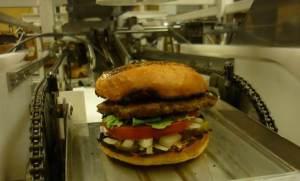
Exiting the Womb is Messy
Hayek and Hazlitt assure us we needn’t worry about the loss of jobs to technological advances because said losses translate to newer jobs elsewhere, specifically in the manufacture and servicing of the advanced technology. This is true, but not the whole story.
Often, the newer jobs are more scarce and harder to obtain—Ford needs only a few engineers to oversee the computers doing the work once undertaken by dozens of assemblers. Efficiency, efficiency, efficiency. What’s more, new technologies are rarely as ‘in-demand’ as the old ones—Ford produces more cars than KUKA produces industrial robots used by Ford to replace workers. Lastly, the manufacture of new technologies rarely occurs where the old technologies were manufactured. Even if total job numbers are equalized, laid-off assembly workers can’t be expected to move from Detroit to South Asia.
The result: today, there aren’t many jobs that allow high school and college graduates to build or create things of value. Luckily, however, the sheer efficiency of the nascent robot economy and the blessed cheapness of outsourced, non-Western labor means that costs are kept low on the products we love in the West. Low costs (buttressed by the welfare state) have fostered the development of the service industry—people of all classes can afford to buy things, and by God, someone has to be there to ship them, retail them, exchange them, install them, repair them, and update them. Following the death of the ‘making things’ economy, the service economy has single-handedly staved off widespread economic depression and mass revolution in the West.
What happens, then, when robots and other advanced, efficient, human-redundant technologies are introduced to the service industry? Surely, it’s cheaper and more efficient to robot-ize certain jobs in retail, wholesale, and every other node in the service network? It is. We already see it happening.
Post robot-ization of the service economy, will some other economy rise and busy the masses with labor? If not, things will get interesting. And messy.
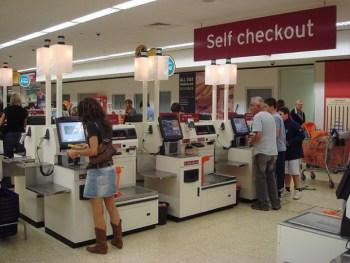
Union busters
The service and welfare economies absorb surplus labor with ease, but not without cost. The entire point of the robot economy is to save money and increase efficiency by replacing the surplus laborers with machines who don’t claim disability or need a 401k. The new rich in this scenario will be those with high IQs, the designers and programmers of the machines, people who can complete a Computer Sci degree while everyone else bails for Communication Studies; the new poor in this scenario will be the erstwhile service laborers and middle managers, people with low to middling IQs who didn’t even learn HTML and now can’t find a job managing a rental car agency or teaching community college because—Yeah, There’s A Robot For That ™.
This scenario bodes well for high achievement, high IQ populations—who, however, will begin to gate themselves off in high security neighborhoods as the Rest of Us slowly realize that the Employers of the Next Economy are only looking for advanced robots and the nerds who can make them. (Attacking the robots only has so much symbolic value.)
But it doesn’t stop there, even after the messy revolts of the redundant laborers. If Kurzweil is even half right, the IQ of AI will advance to the point at which robots can replace more than service workers. What happens, then, when even high-skilled, high IQ positions are taken over by more efficient and more perfect machines?
Out of the Womb: Deep Space Employment
When Apollo 11 reached lunar orbit, only 3 men were aboard the space craft. But the safety—indeed, the possibility—of the mission relied on a well-staffed control center. Even today, the comparatively dull, low-earth orbit labors of the symbolic sapiens aboard the international space station are enabled and monitored by dozens of engineers and scientists on the ground.
However, when the U.S.S. Enterprise exits low-earth orbit, it does so on the assumption that a mission control center is no longer needed. Technology has advanced. The pink slips have been sent out in Florida and Houston. Now the only person on NASA payroll in those old places is the nice lady at the front desk of the Mission Control Center Museum. Everyone required for a safe, successful mission is on board the Enterprise. Granted, in Roddenberry’s optimistic vision, the numbers on board are quite large: depending on the series, the Enterprise boasts upwards of thirty crew members. The mission control centers experienced some attrition, but in the end, many of the geeks in suits simply became astronauts.
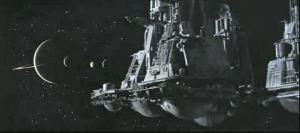
Humans need not apply
Ridley Scott provides a less sanguine vision of the robot economy as seen in deep space. The Nostromo only needed 7 people aboard—no, forgive me, 6 people on board. Ash, the science officer, was an android, and if Oder 937 was any indication, he was really the only necessary crew member. The humans were expendable. An android and an intelligent Auto Pilot are all you need to explore and mine the stars.
The Nostromo, of course, was a cargo ship, hauling not only hundreds of thousands of tons of raw materials bound for earth but also a refinery for processing those materials en route. How many workers were needed in the refinery? Zero.
Aboard the Prometheus is an equally minimalist crew as well as a machine that epitomizes—even more than the most advanced Auto Pilot—the success of the robot economy: the MedPod.
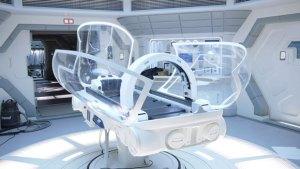
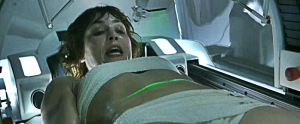
The MedPod diagnoses, treats illness, and performs fine-tuned surgeries with laser-like precision. How many doctors are needed aboard the Prometheus to perform an emergency C-section? Zero. How many nurses? Zero. How many techs? None. The MedPod even sutures. And naturally, it’s self-contained and self-cleaning, so low-wage orderlies are certainly unnecessary. A single, high-tech machine has entirely obviated the need for humans to fill the most human-centric of careers.
The Post-Scarcity Endgame
In this vision, the robot economy has advanced so far that even deep space missions—from the most mundane (the Nostromo) to the most profoundly important (the Prometheus)—can be undertaken with minimal human employment because the bulk of the labor is undertaken by technology, machines, and androids.
What, then, can we assume about the comparably low-tech missions and jobs back on earth? We can assume that the surplus labor has long since died off, which probably only took a few generations given that it was quickly weaned into far-below-replacement birth rates with the help of mass welfare, entertainment, and liberal arts education. The earth is now inhabited by robots—who do the hard labor, the service labor, and even, as we have seen, some of the medical labor, at no cost to the beneficiaries of that labor—and the high-IQ individuals who design, build, and maintain the robots. Put another way: the earth is inhabited by an intelligent upper class and their laboring machines. We can assume, in other words, that the robot economy has stabilized into something like a Post-Scarcity Society. The human population has shrunk and stabilized; the robot population (probably larger than the human one) is entirely low-impact and efficient: they don’t eat, they don’t breed, they can be recycled . . . And as the MedPod demonstrates, many of them don’t even look like us, so any anxiety about Android Rights has proven to be needless.
Back to today . . .
How soon does all of this begin to unfold? we may ask. How quickly will the robot economy rise and advance?
As T.S. Eliot once observed,
The robot economy arrives not with a bang but a burger-making machine.
